#workingman’s dead
Explore tagged Tumblr posts
Text
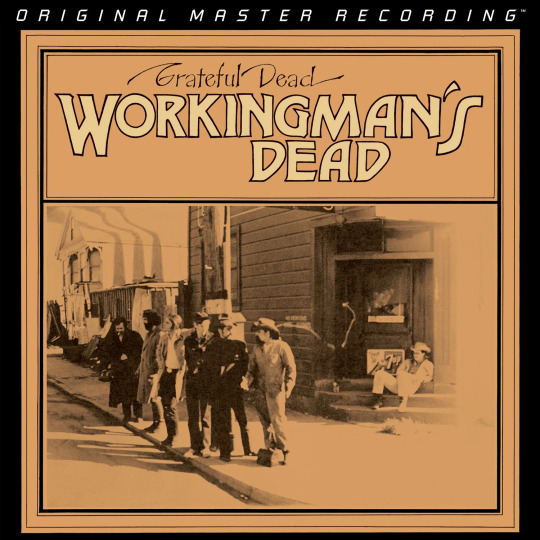
Grateful Dead Workingman’s Dead 2014 Mobile Fidelity Sound Lab ————————————————— Tracks: 1. Uncle John’s Band 2. High Time 3. Dire Wolf 4. New Speedway Boogie 5. Cumberland Blues 6. Black Peter 7. Easy Wind 8. Casey Jones —————————————————
Jerry García
Mickey Hart
Bill Kreutzmann
Phil Lesh
Ronald Charles McKernan “Pigpen”
Bob Weir
* Long Live Rock Archive
#MFSL#Mobile Fidelity#GratefulDead#Jerry Garcia#Mickey Hart#Bill Kreutzmann#Phil Lesh#Ron McKernan#Bob Weir#Workingman’s Dead#Grateful Dead#Reissue#Folk#2014
2 notes
·
View notes
Text
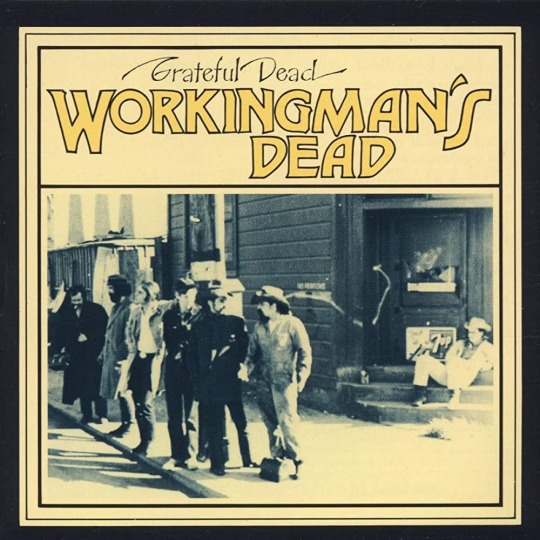
Album Review: Grateful Dead - Workingman’s Dead (2023 Mickey Hart Mix)
Ever the iconoclastic searcher of sound, Grateful Dead percussionist Mickey Hart remixed the band’s 1970 Workingman’s Dead LP for 2023.
Overflowing with Jerry Garcia/Robert Hunter standards - plus Pigpen’s “Easy Wind” - the album is a high-water mark.
Hart was wise to not futz too much, but he did reveal nuances in Garcia’s voice and instruments and Phil Lesh’s bass by opening spaces between the vocals and the music. In doing so, he de-emphasized the pedal-steel guitar and organ in “Dire Wolf” and “Black Peter,” respectively, and pushed up the banjo in “Cumberland Blues.”
Most notably, Hart restored some of Pigpen’s ad-libbed vocal asides to “Easy Wind” and found some lost, wordless harmonies in “Dire Wolf,” making for a fresh listen to an album that will never go stale.
Grade card: Grateful Dead - Workingman’s Dead (2023 Mickey Hart Mix) - B+
7/7/23
#grateful dead#workingman’s man#2023 albums#mickey hart#bill kreutzmann#jerry garcia#bob weir#phil lesh#ron pigpen mckernan#pigpen#robert hunter
17 notes
·
View notes
Text
One of my favourites ✨
2 notes
·
View notes
Text
Day One Thousand and Ninety Nine
It's the same story the crow told me It's the only one he know Like the morning sun you come And like the wind you go
Ain't no time to hate Barely time to wait Woah, oh, what I want to know Where does the time go?
2 notes
·
View notes
Text

... listen to music ...
1 note
·
View note
Text
«There seems to be a general assumption that brilliant people cannot stand routine; that they need a varied, exciting life in order to do their best. It is also assumed that dull people are particularly suited for dull work. We are told that the reason the present-day young protest so loudly against the dullness of factory jobs is that they are better educated and brighter than the young of the past.
Actually, there is no evidence that people who achieve much crave for, let alone live, eventful lives. The opposite is nearer the truth. One thinks of Amos the sheepherder, Socrates the stonemason, Omar the tentmaker. Jesus probably had his first revelations while doing humdrum carpentry work. Einstein worked out his theory of relativity while serving as a clerk in a Swiss patent office. Machiavelli wrote The Prince and the Discourses while immersed in the dull life of a small country town where the only excitement he knew was playing cards with muleteers at the inn. Immanuel Kant’s daily life was an unalterable routine. The housewives of Konigsberg set their clocks when they saw him pass on his way to the university. He took the same walk each morning, rain or shine.. The greatest distance Kant ever traveled was sixty miles from Konigsberg. (Hebrew, Greek, Persian, Christian, German, Italian, German figures)
The outstanding characteristic of man’s creativeness is the ability to transmute trivial impulses into momentous consequences. The greatness of man is in what he can do with petty grievances and joys, and with common physiological pressures and hungers. “When I have a little vexation,” wrote Keats, “it grows in five minutes into a theme for Sophocles.” To a creative individual all experience is seminal --- all events are 9equidistant from new ideas and insights --- and his inordinate humanness shows itself in the ability to make the trivial and common reach an enormous way. (English, Greek figures)
An eventful life exhausts rather than stimulates. Milton, who in 1640 was a poet of great promise, spent twenty sterile years in the eventful atmosphere of the Puritan revolution. He fulfilled his great promise when the revolution was, dead, and he in solitary disgrace. Cellini’s exciting life kept him from becoming the great artist he could have been. It is legitimate to doubt whether Machiavelli would have written his great books had he been allowed to continue in the diplomatic service of Florence and had he gone on interesting missions. It is usually the mediocre poets, writers, etc., who go in search of stimulating events to release their creative flow. (English, Italian figures)
It may be true that work on the assembly line dulls the faculties and empties the mind, the cure only being fewer hours of work at higher pay. But during fifty years as a workingman, I have found dull routine compatible with an active mind. I can still savor the joy I used to derive from the fact that while doing dull, repetitive work on the waterfront, I could talk with my partners and compose sentences: in the back of my mind, all at the same time. Life seemed glorious. Chances are that had my work been of absorbing interest I could not have done any thinking and composing on the company’s time or even on my own time after returning from work.
People who find dull jobs unendurable are often dull people who do not know what to do with themselves when at leisure. Children and mature people thrive on dull routine, while the adolescent, who has lost the child’s capacity for concentration and is without the inner resources of the mature, needs excitement and novelty to save off boredom.»
Eric Hoffer, I Savor the Joy of Dull Work
6 notes
·
View notes
Text
for an album to be really really good it has to have both a song about the highway and a song about trains (source: workingman's dead (1970) and born in the usa (1984))
18 notes
·
View notes
Text

TAKE TWO (3RD EDITION)
This third edition of Take Two features 10 Classic Rock bands – 5 hailing from California, and 5 more from Great Britain. All of them debuted in the 1960s, and recorded into the 1970s, with a few lasting far beyond that. I’m allowed to choose just two titles from their very large catalogs that I get to keep. But I have to give up the rest. No box sets allowed – only one or two disc sets.
The Doors:
1. Weird Scenes Inside the Goldmine 2. The Singles. Until Jim Morrison died, and the band carried on to make two more albums before disbanding for good, The Doors had one of Rock’s perfect catalogs. The six original studio albums with Morrison, and the Absolutely Live! record were all essential to my ears. The Doors continuing popularity means the reissue business has been very kind to the band, and thanks to the CD format, picking just two Doors titles to keep in my collection was actually very easy. Weird Scenes is brilliant – certainly among the best compilations in the history of the business. The record defines the band. The hits aren’t here, but every one of the essential long cuts and deeper cuts from the LPs are. There is no better Doors listening experience than this. And if you add the 44-track, 2CD The Singles set, you’ve got every important studio track from those six original albums.
Jefferson Airplane:
1. 2400 Fulton Street 2. The Woodstock Experience. The first is 36 tracks, and it’s perfect. The best songs from every album are here, and if you can only have one instead of two, this is it. The second pairs the band’s outstanding performance at Woodstock with the album they released at the time, Volunteers, probably the band’s signature record. And even though the four best tracks are already on the collection, there’s something about hearing the entire album, and then listening to the Woodstock performance that is special. Revolution was very much in the air, and the Airplane were at the musical forefront of that movement.
Grateful Dead:
1. American Beauty 2. Terrapin Station. It’s always puzzled me why I have so many Grateful Dead albums (every studio record) in my collection, but The Dead are not among my 20 or so favorite bands. And I’m atypical, too, because I prefer the studio Dead recordings to the live ones even though I have a ridiculous amount of those as well. When it came to choosing just two, I picked my two favorite studio albums, the first from 1970, and the second from 1977. And even though there are a great many more I love, I could be perfectly happy with just these two because I think they capture the essence of the band, and many of their best moments on record. I think as good as some of those live records are, I’d eventually become bored hearing the same improvisations again and again. If you’re going to really do the live Dead experience, you need a lot of live recordings because no two are the same. Could you even choose just two of those? I couldn’t. So, I went studio, and much as I would’ve liked to have Workingman’s Dead, or Wake of the Flood, or In the Dark, I’ll take these two and be satisfied.
Santana:
1. Caravanserai 2. Santana’s Greatest Hits. Another band I revere, and one where I own nearly the entire catalog. But when push comes to shove, Caravanserai, and a collection of the best singles, and deep cuts from the first three albums are the records I need. That’s where I go first, and that’s what I return to again and again. I considered Moonflower, too. Unfortunately I couldn’t have The Essential Santana – which is much longer than that first hits collection – because I have the three CD version with bonus disc. But what defines the band for me are those first four albums, and I can live with these choices.
Creedence Clearwater Revival:
1. Green River 2. Cosmo’s Factory. The obvious “go to” album for CCR fans is Chronicle which collects 20 hits, and since CCR were probably the greatest singles band ever (aside from The Beatles), why wouldn’t you? Well, I can’t because I don’t own it. I have the box that collects their entire catalog. So, I went back to the original records – all of which I own, and picked my two favorites, the first from 1969, and the second from 1970. Both are loaded with hits, and both are 5-star records in their own right.
The Who:
1. The Who by Numbers 2. The Kids Are Alright. I think most Who fans would probably pick Who’s Next and Tommy, or maybe Sell Out, and Quadrophenia. Live at Leeds might also make a few lists. Not very many would choose 1975’s The Who by Numbers. That’s been my favorite Who album since I bought it, and I still play it regularly. My second choice is the soundtrack from the documentary film of the same name, and because it provides a career overview, and mixes the classic, the rare, some studio recordings with different mixes, and even a couple of new live performances, it was an easy choice.
The Kinks:
1. The Kink Kronikles 2. Come Dancing with The Kinks: The Best of 1977-1986. As much as I love many of The Kinks original studio albums, there are simply too many great tracks from too many records to not go with a couple of compilations. The first covers their Reprise years while the second has the Arista stuff. Nothing from RCA or MCA or Columbia, but what can a poor boy do? I burned a couple of CD-R collections of favorite tracks a few years ago, but I’m trying to stick with what’s commercially available when there’s something close in the marketplace.
Led Zeppelin:
1. Untitled (4th album) 2. III. I’m a big Zeppelin fan, but not the biggest Zeppelin fan you’ve ever met, so while I own the entire basic catalog, collections were not in the cards. So, I went with my two favorite records. The debut record and Physical Graffiti would’ve been my third and fourth choices, but about a dozen of my all-time favorite Zep tracks come from the third and fourth albums, so that’s what I picked.
Deep Purple:
1. Purple Passages 2. Deepest Purple: The Very Best of Deep Purple. Deep Purple was, at one time, my favorite band after The Rolling Stones, and I have just about everything they’ve done. So, this was extremely difficult because in choosing only two titles, I’m neglecting the last 50 years of their catalog in favor of just touching on the first seven. The first samples their three albums with the original lineup. Very few Purple fans I know love this period as much as I do. So, I had to do the best collection available. The second has many signature songs from the Mach II, and Mach III lineups, and while I wish it was longer, what’s here is absolutely necessary to satisfy the headbanger who lives inside me, and only comes out at night when the moon is full, and the wolfbane blooms.
Black Sabbath:
1. Vol. 4 2. The Dio Years. Capping off this trio of bands that permanently damaged my hearing, Black Sabbath are yet another band of which I have nearly the entire catalog. (I’m missing one live record, and what is widely considered to be their worst studio record). I knew I wanted both the Ozzy, and Dio years represented, so I went with my favorite from the Ozzy period, Vol. 4. It means there are a lot of classics from that lineup that I won’t have, but when I reach for a Sabbath record, there is not a better one than that fourth record. The Dio Years is an outstanding collection that cherry picks their best work with the elfin singer with the dark fantasy lyrical obsession.
Hope you enjoyed this one. Next time out, I’ll probably take a left turn, and offer something different again.
2 notes
·
View notes
Text
ON THIS DATE (53 YEARS AGO)
June 14, 1970 – Grateful Dead: Workingman's Dead is released.
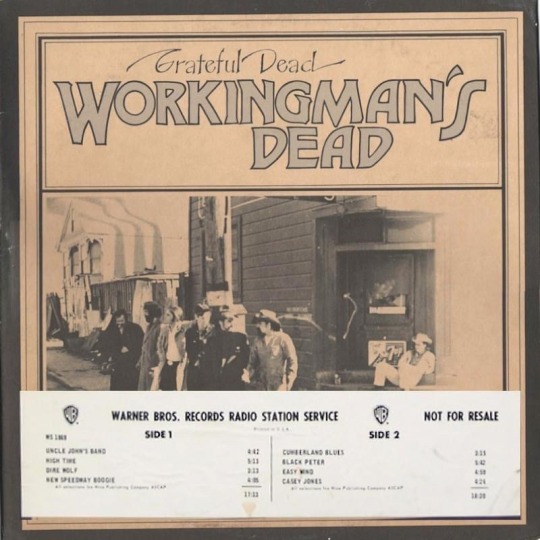
Workingman's Dead is the fourth studio album by the Grateful Dead, released on June 14, 1970. It reached #27 on the Billboard 200 Top LP's & Tapes chart. In 2003, the album was ranked number 262 on Rolling Stone magazine's list of the 500 greatest albums of all time.
The title of the album comes from a comment from Jerry Garcia to lyricist Robert Hunter about how "this album was turning into the Workingman's Dead version of the band."
Garcia has said that much of the sound of the album comes both from his pairing with Hunter as well as the band's friendship with Crosby, Stills and Nash. "Hearing those guys sing and how nice they sounded together, we thought, 'We can try that. Let's work on it a little,'" commented Garcia.
Songs such as "Uncle John's Band," "High Time" and "Cumberland Blues" were brought to life with soaring harmonies and layered vocal textures that had not been a part of the band's sound until then. According to the 1992 Dead oral history, Aces Back To Back, in the summer of 1968, Stephen Stills vacationed at Mickey Hart's ranch in Novato. "Stills lived with me for three months around the time of [CSN's] first record," recalls Hart, "and he and David Crosby really turned Jerry and Bobby onto the voice as the holy instrument. You know, 'Hey, is this what a voice can do?' That turned us away from pure improvisation and more toward songs."
The Grateful Dead's first four albums reinforced their stature as a performing group, with a loose improvisational feel rooted in the blues, rock & roll, and modern jazz. But with the 1970 release of Workingman's Dead, Garcia, Weir, Lesh, McKernan, Kreutzmann, and Hart reined in their many spatial musical elements and found their true stylistic niche in the studio with an engaging blend of country, blues, and folk. Where earlier studio releases strove to recreate the kind of freeform group improvisations that won the Dead a fanatical cult following in the Bay area, Workingman's Dead drew upon a rural American vernacular that was in many ways analogous to that of the Band.
The resulting music has a rootsy, timeless quality, with tight instrumental arrangements, concise solo breaks, and a carefully wrought style of vocal harmonizing. The Dead won extensive airplay with tuneful songs like "Uncle John's Band" and "Casey Jones," while expanding their following well beyond San Francisco. Garcia's slithering pedal steel counterpoint and twangy banjo rolls make for a charismatic new style of bluegrass on "Dire Wolf" and "Cumberland Blues," while "New Speedway Boogie," featuring some of Robert Hunter's best lyrics, is a pointed personal metaphor for the tragic chaos at Altamont the summer before. This remains one of the legendary band's most concise and beautifully executed records.
__________
ORIGINAL ROLLING STONES REVIEW
It's so nice to receive a present from good friends.
Workingman's Dead is an excellent album. It's a warming album. And most importantly, the Dead have finally produced a complete studio album. The songs stand up quite nicely right on their own merits, which are considerable.
"Uncle John's Band," which opens the album, is, without question, the best recorded track done by this band. Staunch Dead freaks probably will hate this song. It's done acoustically for a starter. No Garcia leads. No smasho drumming. In fact, it's got a mariachi /calypso type feeling. Finely, warmly-lush tuned guitar work starts it off, with a statement of the beat and feeling. When Garcia comes in with the vocal, joined by a lot of tracks of everyone else's voices, possibly including his, it's really very pretty. The lyrics blend in nicely with the music. "All I want to know/How does the song go?" "Come hear Uncle John's band/playing to the tide/Come with me, or come alone/He's come to take his children home." Near the end of the song there is an a cappella section done by everyone, sounds like about 62 tracks, maybe 63. Just listen to it, and try not to smile.
The years of playing together have shown handsome dividends. "Dire Wolf" points this out. It's a country song, Garcia's steel guitar work is just right, and everyone sings along to the "Don't murder me" chorus.
The country feeling of this album just adds to the warmth of it. "Cumberland Blues" starts off as a straight electric cut, telling the story of trying to make ends meet in bad times. Slowly, imperceptibly at first, a banjo enters the song. By the end, I was back at the old Gold Rush along with everyone else. The banjo brought me there.
Even the cuts that are not directly influenced by country stylings have a country feel to them. I suspect that this is due to, the band's vocals. Living out on their ranch seems to have mellowed them all, or at least given a country tinge to their voices. "Casey Jones" is not the theme song you might remember from television. "Driving that train/High on cocaine/Casey Jones you better watch your speed." Listen closely, especially to the cymbal work. Then listen to Phil Lesh's bass mixing with Weir's guitar. Now listen to the cymbal again. Yep. They did it. I don't know who's train is better, Casey's or the Dead's. Living sound effects. Just fine.
~ Andy Zwerling (July 23, 1970)
#gratefuldead#grateful#alwaysgrateful#alwaysdead#playdead#workingmansdead#a band beyond description#grateful dead#forevergrateful#foreverdead
17 notes
·
View notes
Text
youtube
Peter Rowan Leads Phil Lesh & Friends into the Woods on “Clubhouse Sessions”
- Big band includes Stu Allen, John Molo, Barry Sless, Holly Bowling, Elliott Peck, Jason Crosby and Dan “Lebo” Lebowitz
Peter Rowan came to the Terrapin Clubhouse and took Phil Lesh & (a large group of) Friends into the country and bluegrass.
With the octogenarian - but not in the way - Rowan and Lesh at the helm, a stellar band of relative whippersnappers featuring guitarists Stu Allen, Dan “Lebo” Lebowitz and Barry Sless (pedal steel); singer Elliott Peck; drummer John Molo; fiddler Jason Crosby; and pianist Holly Bowling added respectful modernity to songs from Old & In the Way, Rowan and the Grateful Dead.
Though this was a one-off band for Episode 4 of Lesh’s “Clubhouse Sessions,” it couldn’t have been more tight but loose on “Dupree’s Diamond Blues,” which peaked as first Bowling, then Crosby and Sless transformed the studio into a dusty, Old West saloon. It’s a magical bit of musical inspiration made possible by players adept at picking their spots, Molo’s agile, light-touch drumming and a sonic approach that left room for Lesh’s bass to gurgle to the surface.
There’s not a wasted second in the 40-minute performance video, bookended as it is with a version of “Midnight Moonlight” that nods slyly to “Throwing Stones” and a “Dire Wolf” that finds Sless recalling Workingman’s Dead-era Jerry Garcia on the sit-down guitar.
Peck sings “Ripple” beautifully with Lesh taking over as the band crosses the bridge and Rowan reminds listeners he can still yodel on “Land of the Navajo.”
Beyond grateful for this magical offering.
Read Sound Bites’ coverage of the previous “Clubhouse Sessions” here.
6/21/24
#Youtube#clubhouse sessions#phil lesh & friends#phil lesh#grateful dead#peter rowan#old & in the way#elliott peck#midnight north#stu allen#dan lebo lebowitz#barry sless#moonalice#jason crosby#holly bowling#john molo#bruce hornsby and the range#midnight moonlight#dire wolf#land of the najavo#dupree’s diamond blues#ripple
6 notes
·
View notes
Text

Grateful Dead - American Beauty
The second album in a year for the Dead. It's easy to assume that their newfound country sound would have been a one off experimentation or would grow thin quickly, but this album easily tops Workingman's Dead. The Dead are even tighter and more coordinated than ever before. Jerry Garcia leans even harder into the pedal steel guitar and tight harmonies. It also wound up producing Truckin', one of their most long lasting live staples. Basically if you liked Workingman's Dead then American Beauty is just more of that but better.

Tom Petty - Wildflowers
Uh, yeah ok. I mean this isn't bad. It feels like over polished Full Moon Fever b-sides but y'know I like Full Moon Fever. I wish there were a few more energetic tracks like You Wreck Me and A Higher Place. It runs over an hour but I didn't feel the length as bad as I thought I would. It's mid. I like it tho.

Fiona Apple - The Idler Wheel Is Wiser Than the Driver of the Screw and Whipping Cords Will Serve You More Than Ropes Will Ever Do
Yes that is the title of the album. Fiona Apple never misses and this is one of her finest. Dramatic, romantic, moody, and playful. The piano plods confidently but always changes itself up before anything has a chance to get too sappy. Apple's voice is wavering, calm, aggressive sometimes all in one song. The quirkyness is sincere, somehow never grating. It's kind of amazing that Fiona Apple's music doesn't actively annoy me, but even wilder that she's one of my favorite artists.

Nina Simone - Wild Is The Wind
Nina Simone has one of the most commanding voices in all of musical history. There's just a shitload of power and conviction behind every song and it feels like she can barely be contained. No one can crescendo like Nina Simone. No one. The buildup on Four Women should be enough to prove that. Simone's voice is always good though, what this album has over other Nina Simone records is definitely the arrangements. The buildup and bombast of Four Women and Lilac Wine are par the course but I Love Your Lovin' Ways has an energetic blues arrangement and Why Keep On Breaking My Heart gets the full doo wop treatment. There's a lot of range here. So much emotional rawness and dramatic flair.
3 notes
·
View notes
Text
Putting on my Ecologist Hat, I once had a friend ask me "how long does it take for an old-growth forest to form? how old is 'old-growth'?" I gave the question a good bit of thought, and I will stand by my answer: for pretty much any temperate forest I'm aware of, after about 100 years after a major disruption (fire, the saw, pest/disease outbreak, volcanic eruption) it will begin to noticeably take on old-growth characteristics*. And after 250 years it will be meaningfully indistinguishable from an undisturbed forest. This is, of course, not including pests and diseases that eliminate an entire species or genus from the ecosystem, or the introduction of new species. But even in those cases, this is about the right timeframe for a new autopoeic old-growth ecosystem to be established.
This is sort of bad news, in that old-growth forests do take a long time to reestablish. But I think it will come as good news to many, who imagine that old-growth forests are necessarily millennia old.
*What are old-growth characteristics? Well, these: trees of a wide variety of ages and size classes forming a complex, multilayered canopy; an abundance of late-successional, shade-tolerant species; a forest floor community featuring herbaceous species adapted to dense forest conditions and a deep organic layer of decomposing leaf litter; animal communities similarly adapted to these conditions; large amounts of dead wood, both standing and on the ground; and the complex forest floor topography associated with repeated uprootings of large trees.
===============
Putting on my Lumberman Hat, once upon a time some coworkers and I found a particularly impressive surviving old-growth redwood on a protected area of a timber company's lands. Now, this tree was impressive by 'surviving a century and a half of intensive logging' standards, but compared to what's out there in the never-logged stands, it was pretty average. We did some quick, back-of-the-envelope geometry to estimate how much recoverable timber would be in that tree, and when we got home we checked out the stumpage prices for old-growth redwood lumber. Conservatively, a sawmill would pay $40,000 for that tree. No, I didn't add a zero there: the wood in that single tree was worth a year's wages for a workingman.
I suddenly became much more sympathetic to the greed of the lumber barons. Yes, they were short-sighted, foolish, and possibly blasphemous in the speed and extent of the destruction they caused. But there have been, and continue to be, people who would sell out things even dearer to them for far, far less money than that.
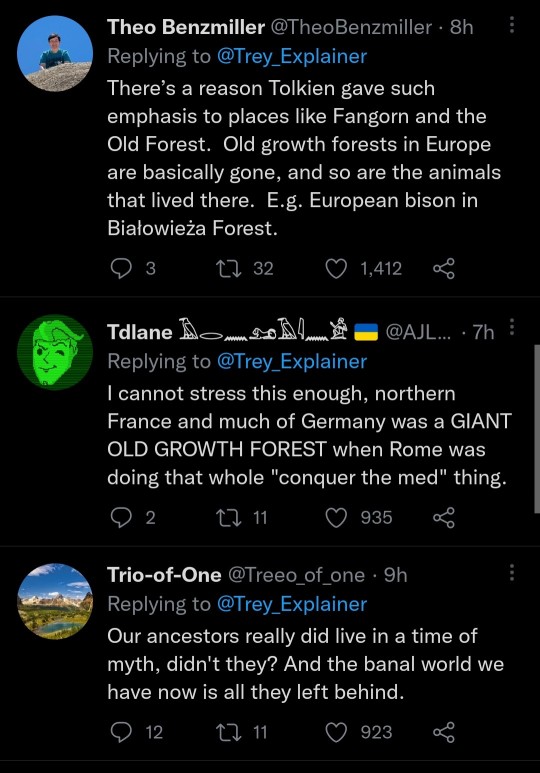
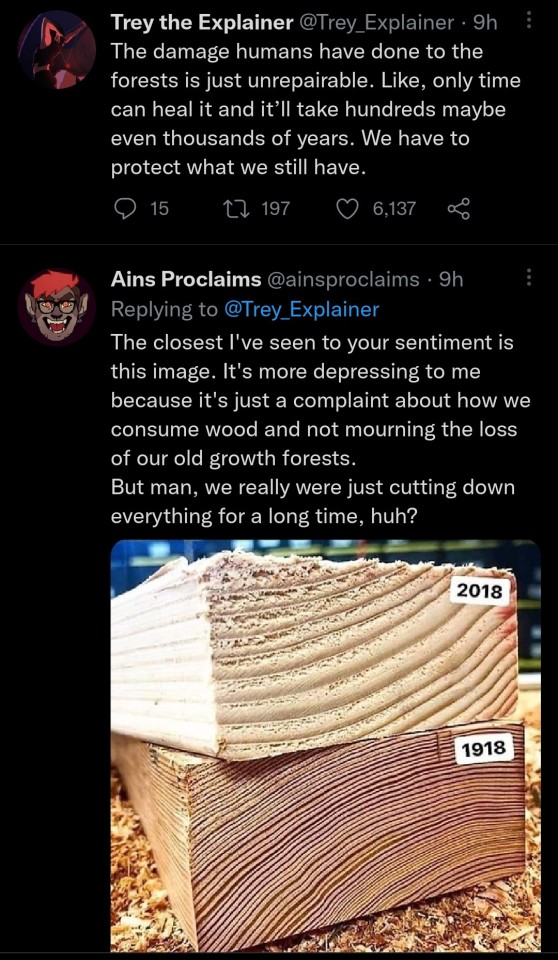
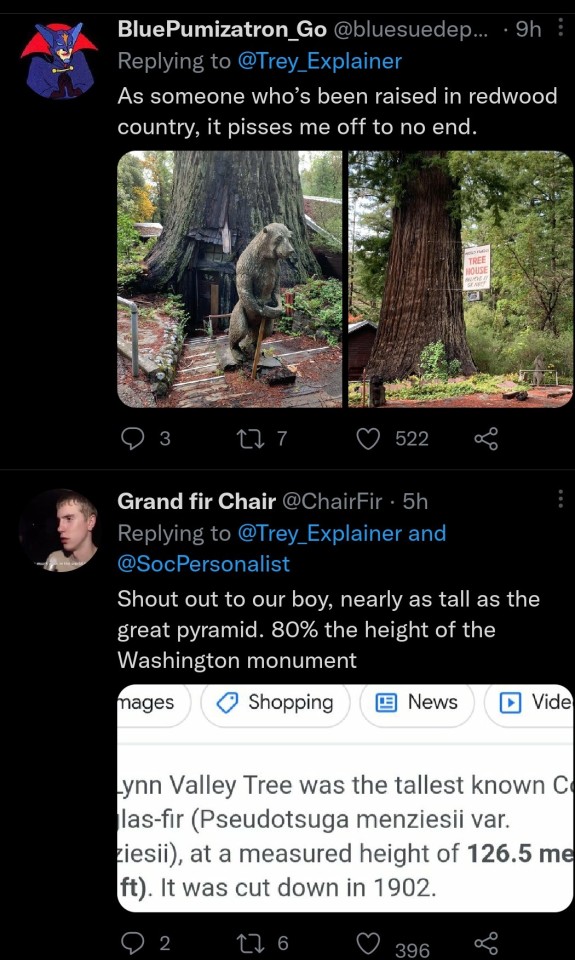
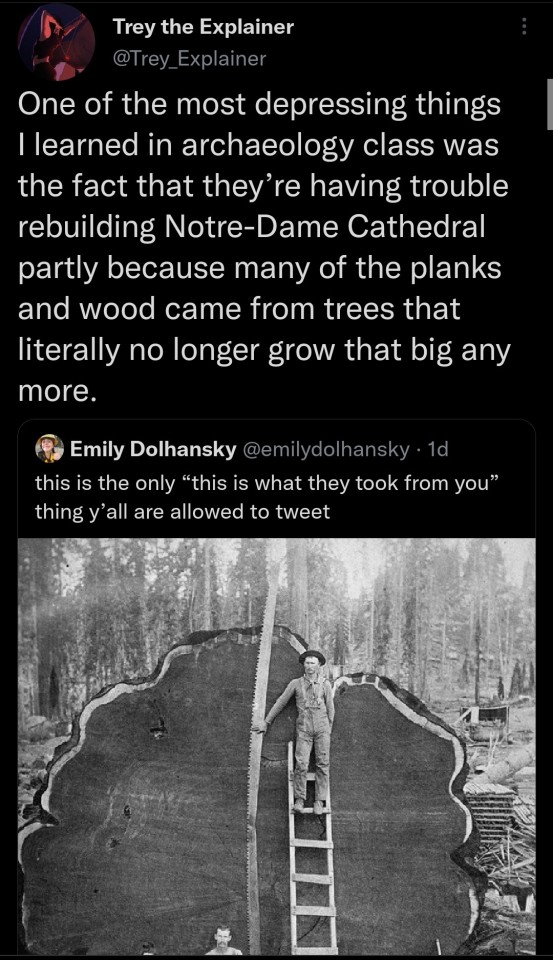
89K notes
·
View notes


